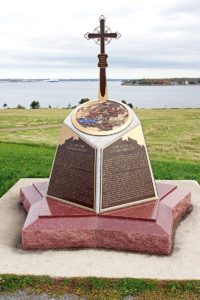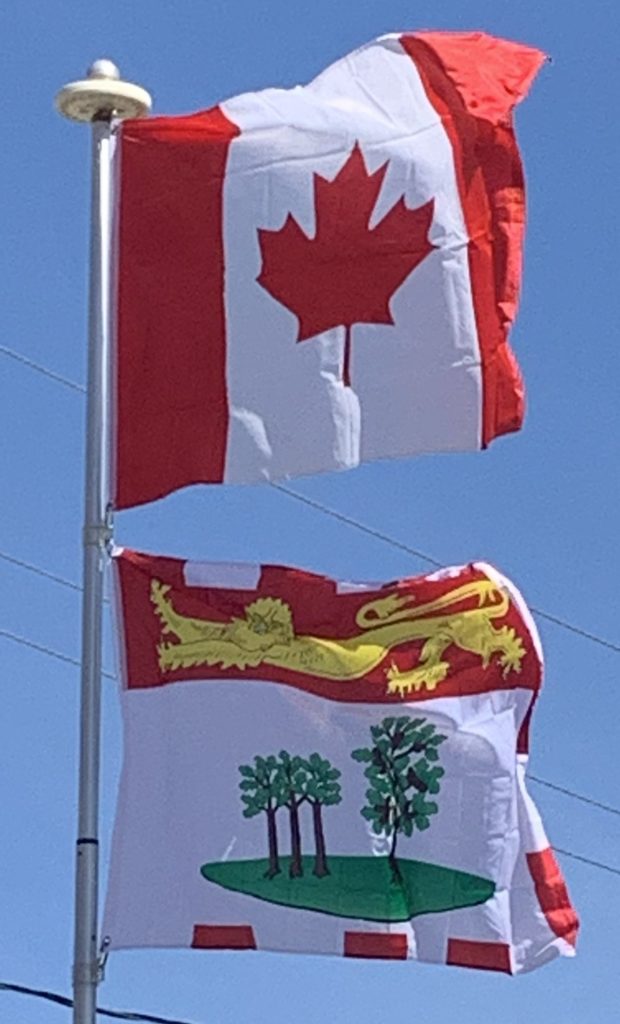New Englanders had a force of 200 soldiers stationed at Port-La-Joye, as well as two warships boarding supplies for its journey of Louisbourg. To regain Acadia, Ramezay was sent from Quebec to the region to join forces with the Duc d’Anville expedition. Upon arriving at Chignecto, he sent Boishebert to Île Saint-Jean to ascertain the size of the New England force. After Boishebert returned, Ramezay sent Joseph-Michel Legardeur de Croisille et de Montesson along with over 500 men, 200 of whom were Mi’kmaq, to Port-La-Joye. In July 1746, the battle happened near York River. Montesson and his troops killed forty New Englanders and captured the rest. Montesson was commended for having distinguished himself in his first independent command. Hostilities between the British and French was ended in 1748 with the Treaty of Aix-la-Chapelle in 1748.
Roughly one thousand Acadians lived on the island prior to the Acadian Exodus from Nova Scotia. The population grew to nearly 5,000 the late 1740s and early 1750s, as Acadians from Nova Scotia fled to the island during the Acadian Exodus, and the subsequent British-ordered expulsions beginning in 1755.

Hostilities between British and French colonial forces resumed in 1754, although formal declarations of war were not issued until 1756. After French forces were defeated at the siege of Louisbourg, the British performed a military campaign on Ile Saint-Jean to secure the island. The campaign was led by Colonel Andrew Rollo under orders from General Jeffery Amherst. The following campaigns saw the deportation of the most Acadians from the island. Many Acadians died in the expulsion en route to France; on December 13, 1758, the transport ship Duke William sank and 364 died. A day earlier the Violet sank and 280 died; several days later Ruby sank with 213 on board. The French formally ceded the island, and most of New France to the British in the Treaty of Paris of 1763.
British Colony:
Initially named St. John’s Island by the British, the island was administered as part of the colony of Nova Scotia, until it was split into a separate colony in 1769. In the mid-1760s, a survey team divided the Island into 67 lots. On July 1, 1767, these properties were allocated to supporters of King George III by means of a lottery. Ownership of the land remained in the hands of landlords in England, angering Island settlers who were unable to gain title to land on which they worked and lived. Significant rent charges (to absentee landlords) created further anger. The land had been given to the absentee landlords with a number of conditions attached regarding upkeep and settlement terms; many of these conditions were not satisfied. Islanders spent decades trying to convince the Crown to confiscate the lots, however the descendants of the original owners were generally well connected to the British government and refused to give up the land.
After becoming a separate colony from Nova Scotia, Walter Patterson was appointed the first British governor of St. John’s Island in 1769. Assuming the office in 1770, he had a controversial career during which land title disputes and factional conflict slowed the initial attempts to populate and develop the island under a feudal system.
